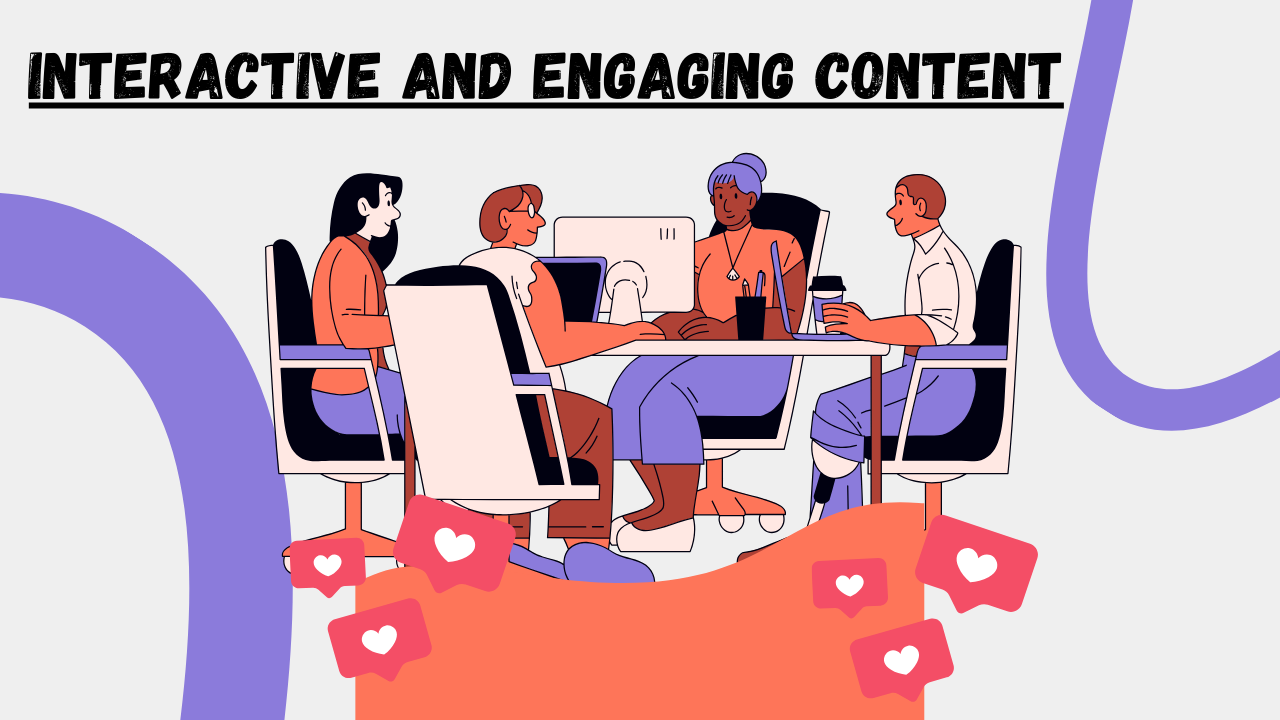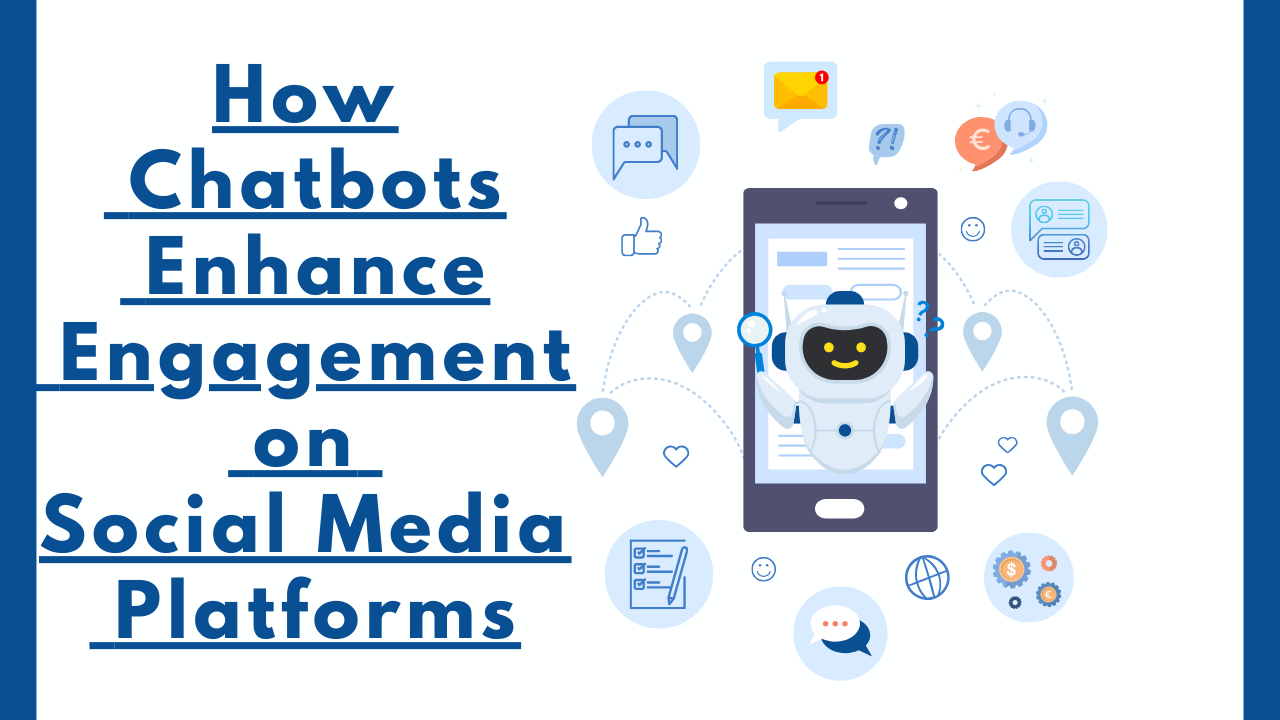In the age of digital interactivity, social media has evolved beyond simply being a medium for sharing updates and connecting with friends. Businesses, brands, and influencers now use social platforms to engage with customers, provide customer support, and generate brand loyalty. Among the many tools enabling deeper connections, chatbots are at the forefront. By allowing for instant, personalized interactions, chatbots enhance user engagement, streamline customer service, and provide valuable insights into customer preferences. This article explores how chatbots transform engagement on social media platforms, from increasing customer satisfaction to enhancing brand reach.
The Rise of Chatbots on Social Media
Chatbots have become a staple in customer interaction strategies for brands like Facebook Messenger, Instagram, and Twitter. Their popularity stems from their ability to provide quick responses, automate repetitive tasks, and interact with multiple users simultaneously. According to a study by Grand View Research, the global chatbot market size is expected to expand at a compound annual growth rate of 23.5% from 2021 to 2028, showing that businesses are embracing chatbots as key engagement tools.
Social media chatbots leverage AI and natural language processing to understand and respond to user inquiries in real-time. This AI-driven approach helps businesses establish a presence that is responsive and adaptive to customer needs, facilitating an always-on engagement strategy.
Key Benefits of Chatbots for Social Media Engagement
Instant Customer Support and Query Resolution
Social media has become a primary channel for customer support, and chatbots play a crucial role by handling common customer inquiries instantly. When a user has a question about a product, order status, or service, they expect prompt answers. Chatbots fulfill this need by offering 24/7 support, reducing response times, and handling multiple queries at once. This helps build a positive perception of the brand, as users appreciate quick responses and seamless experiences.
For example, e-commerce brands on Facebook Messenger often use chatbots to manage inquiries about product availability, delivery schedules, and return policies. These quick resolutions minimize friction, keep users engaged, and encourage repeat interactions with the brand.
Personalized Recommendations and Offers
Through the use of data analytics, chatbots can track user behavior and preferences to offer personalized recommendations. This targeted approach increases the likelihood of users engaging with the brand’s products or services. For instance, a fashion brand’s chatbot on Instagram may suggest clothing items based on a user’s past purchases, preferred style, or browsing history.
By personalizing interactions, chatbots create a more tailored user experience. This personalization not only boosts engagement but also improves conversion rates as users are more likely to interact with content and offers that align with their interests.
Enhanced Customer Retention and Loyalty
Maintaining long-term customer relationships is crucial for any brand, and chatbots contribute significantly to customer retention efforts on social media. By consistently providing users with helpful information, timely support, and personalized content, chatbots build stronger relationships between brands and their audiences. These automated interactions contribute to a positive user experience, increasing the likelihood of customer loyalty.
Some brands use gamification elements within chatbot interactions to engage users further. For instance, a chatbot could offer points for every interaction, which can be redeemed for discounts or rewards. Such initiatives not only make interactions more engaging but also foster loyalty and return visits.
Interactive and Engaging Content
Chatbots on social media platforms are an excellent medium for distributing interactive content. Rather than delivering static promotional posts, chatbots can present users with engaging quizzes, polls, or personalized messages. For example, a travel company might use a chatbot to offer a quiz on users’ preferred travel destinations, followed by suggestions based on their results.
This interactive approach not only captures users’ attention but also encourages them to spend more time with the brand, making social media a more engaging experience overall. In this way, chatbots can keep audiences engaged while simultaneously collecting valuable data on user preferences and behavior.
Lead Generation and Conversion Optimization
Chatbots play a crucial role in lead generation on social media platforms by capturing users’ information and nurturing them through the sales funnel. Many businesses use chatbots to initiate conversations, qualify leads, and guide potential customers toward specific products or services based on their inquiries and responses. For example, a chatbot might ask users for their preferences and suggest relevant products, encouraging them to proceed with a purchase.
Chatbots can also serve as lead magnets by offering exclusive content, discounts, or early access to new products in exchange for user contact information. This approach helps brands grow their customer base while simultaneously engaging users through a personalized and interactive experience.
Chatbot Strategies to Boost Engagement on Social Media
Automated Campaigns and Drip Marketing
Drip marketing, a strategy in which a series of messages are automatically sent to users over a set period, is enhanced through chatbots on social media. By automating campaigns, chatbots can deliver timely messages, such as reminders, product updates, or personalized offers, to keep users engaged without overwhelming them with too much content at once. This approach creates a consistent, cohesive engagement journey for users.
Automated campaigns also enable chatbots to follow up with users after certain interactions. For instance, if a user browses specific products, the chatbot can follow up with a message showcasing similar items or offering a discount, increasing the chances of conversion.
Event Reminders and Updates
For brands that host events, live sessions, or webinars, chatbots on social media are a great way to provide reminders and updates. When users register for an event, the chatbot can send timely reminders, share updates about guest speakers or agenda items, and provide links to join the event. This improves the chances of higher attendance rates, as users are less likely to forget about the event.
Additionally, after the event, chatbots can follow up with users, gathering feedback or encouraging them to engage with related content, further extending the engagement.
Customer Feedback and Surveys
Social media chatbots can collect valuable user feedback through surveys and questionnaires. By initiating conversations around customer satisfaction, product preferences, or suggestions, chatbots can help businesses gather insights into their audience’s expectations and experiences. This data can inform future marketing campaigns, product improvements, and engagement strategies.
For example, a chatbot might ask a user to rate their recent purchase experience or inquire about their preferred content types. Such insights help businesses refine their social media content strategy, ensuring it resonates with their audience.
Handling Common Objections and FAQs
Chatbots are also an effective tool for managing FAQs and addressing objections that users may have about a product or service. For instance, a potential customer may have concerns about pricing, product quality, or shipping options. A chatbot can provide accurate answers, addressing user concerns and moving them closer to making a purchase.
By handling common questions promptly, chatbots prevent user frustration and improve the overall customer experience, increasing the likelihood that users will engage with the brand.
The Future of Chatbots in Social Media Engagement
Integration with AI and Machine Learning
The next generation of chatbots will leverage advanced AI and machine learning algorithms to create even more engaging interactions. Future chatbots will be able to learn from user behavior patterns, preferences, and feedback, creating a more seamless and intuitive interaction experience. This AI-powered customization will make users feel as though they’re interacting with a live customer service agent, enhancing user satisfaction and fostering long-term loyalty.
Voice-Activated Chatbots
As voice-activated devices become more popular, social media platforms may see the rise of voice-activated chatbots. These chatbots will allow users to engage with brands through voice commands, providing a more hands-free and accessible interaction method. This is especially valuable for mobile users who may find it more convenient to use voice interactions rather than typing.
Greater Emphasis on Privacy and Data Security
With the growing emphasis on data privacy, chatbots will need to prioritize security and compliance with regulations like the GDPR. Chatbot developers are likely to focus on transparency and consent management, ensuring that users feel safe sharing their information with chatbots on social media platforms. Enhanced security features will increase user trust and engagement with chatbots over the long term.
Omnichannel Engagement
As brands aim to create unified user experiences across multiple channels, chatbots will play a significant role in omnichannel engagement strategies. Future chatbots may be capable of carrying user data across platforms, allowing users to interact with brands seamlessly across social media, email, and even in-app environments. This consistency in engagement will create a more cohesive experience and improve customer satisfaction across all touchpoints.
Conclusion
The integration of chatbots on social media platforms has revolutionized how brands interact with users. By providing instant support, offering personalized recommendations, and enabling interactive experiences, chatbots have become invaluable tools for enhancing social media engagement. They help brands foster stronger customer relationships, increase loyalty, and generate valuable insights into customer preferences.
As chatbot technology continues to evolve, we can expect even more innovative and user-friendly applications that will further enhance engagement on social media. The future of social media engagement lies in the hands of AI-driven chatbots, which offer the efficiency, personalization, and scalability that businesses need to thrive in today’s competitive digital landscape.
FAQs
What are the main benefits of using chatbots on social media?
They offer numerous benefits on social media, such as providing instant responses, personalized recommendations, and round-the-clock customer support. They streamline customer inquiries, improve user engagement, and allow businesses to interact with multiple users simultaneously, enhancing overall user satisfaction.
How can chatbots improve customer support on social media?
They can answer frequently asked questions, guide users through common issues, and provide support 24/7. By handling inquiries instantly, chatbots reduce wait times and provide users with timely and helpful information, creating a more positive customer experience.
Can chatbots on social media help increase sales?
Yes, they can assist in sales by guiding users through product recommendations, offering personalized discounts, and answering product-related questions. They can also help qualify leads and direct potential customers toward specific offerings, increasing the likelihood of conversions.
What types of content can chatbots deliver on social media?
They can deliver a variety of interactive content, including quizzes, polls, product suggestions, event reminders, and surveys. This type of content keeps users engaged and encourages them to interact with the brand in a more meaningful way.
Are chatbots secure to use for customer interactions on social media?
Yes, reputable chatbots are designed with security measures in place to protect user data. However, businesses need to follow data privacy regulations, inform users about data collection, and use secure platforms to ensure that customer interactions remain safe and private.
